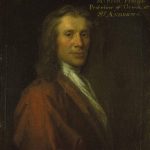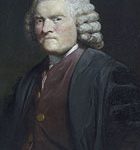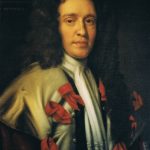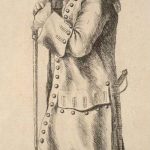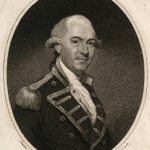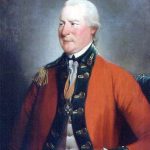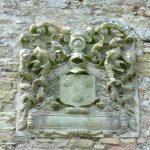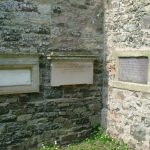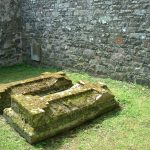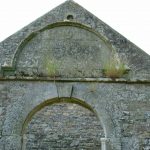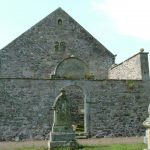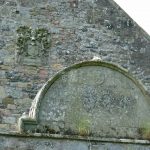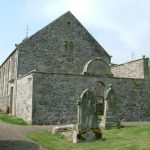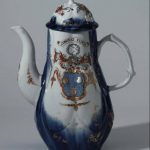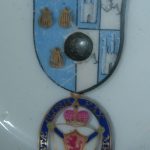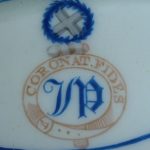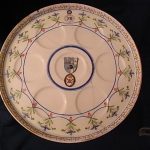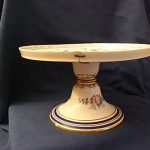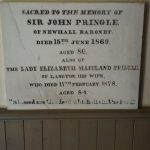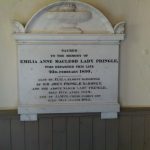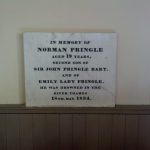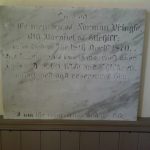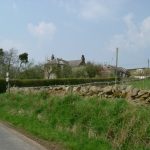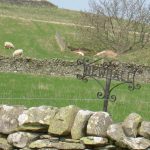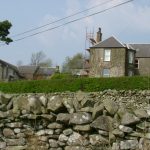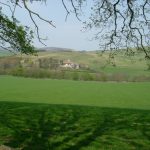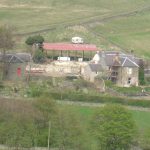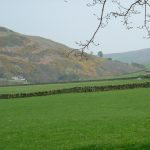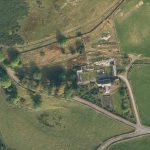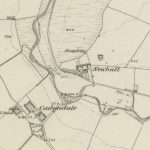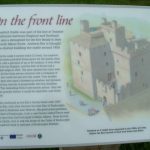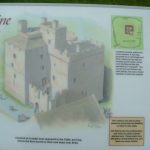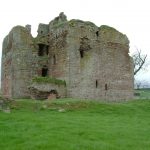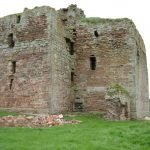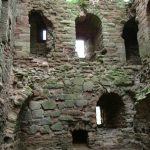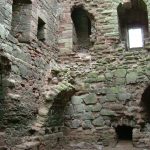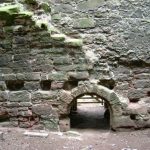The Pringles of Newhall and Stichill
The Pringles of Newhall and Stichill
(Newhall was originally called Craiglatch or Craigleith)
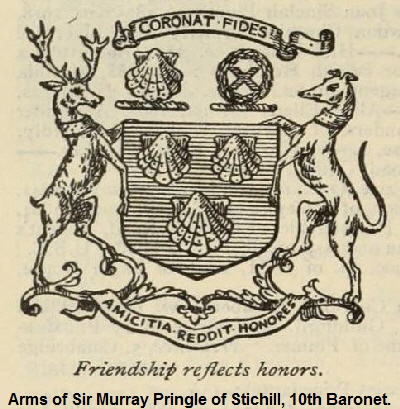
The Lineage of the Pringles of Newhall
William Hoppringill the 1st of Craigleith is believed to be the second son of Alexander Hoppringill, the second son of Adam Hoppringill of that Ilk who was the son of William Hoppringill the 1st to be designated of that Ilk.
1. William Hoppringill of Craigleith and Whitton, Constable of Cessford Castle. Crown tack, 1485, 1490, and charter of Hut, 1492.
- Alexander Hoppringill
- Robert Hoppringill
2. Alexander Hoppringill of Craigleith.
3. Robert Hoppringill of Craigleith. Grandson of William of Craigleith and Whitton. Possibly died at Flodden in 1513. Seisin, 1512.
- Alexander Hoppringill of Craigleith.
- George Hoppringill.
4. Alexander Hoppringill of Craigleith and Williamhope. Retour, 1539.
- George Hoppringill of Craigleith.
5. George Hoppringill of Craigleith, died 1602. Lands forfeited.
- George Hoppringill of Newhall.
- Robert Hoppringill in Bartingbush, 1st of Stichill. Ancestor of the Pringles of Stichill – see below.
- John Hoppringill. Died 1627.
- James Pringle. Apprentice Tailor in Edinburgh in 1627.
- Thomas Pringle.
6. George Hoppringill of Newhall. In 1601 regained half the land of Craigleith, which were re-named ‘Newhall’. The other half, called the ‘Knows’ were re-named ‘Whytbank’ and given in 1617 to James Pringle of Whytbank.
- James Pringle, younger of Newhall. Predeceased his father, probably at the battle of Dunbar or Worcester.
- Robert Pringle of Newhall. Born 1644. D. 1672.
- Robert Pringle in Caverton/Carberton.
- George Pringle, apprentice in 1629 to David Pringill, Surgeon in Edinburgh.
- William
- James
- Thomas
7. Robert Hoppringill of Newhall. On his death in 1672, his sister and his uncle Robert Pringle in Caverton, resigned their rights to the lands of Newhall in favour of Robert Pringle of Stichill who was heir male to Newhall’s grandfather George Pringle.
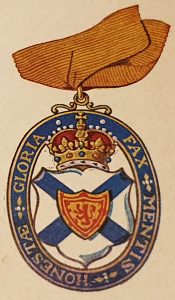
Badge of a Baronet of Nova Scotia
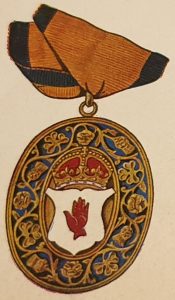
Badge of a British Baronet
The Pringles of Stichill, Craigcrook, Lochton, Edgefield and Weens
1. Robert Pringill of Baitingbush (now Batenbush), 1st Laird of Stitchill, born 1581, died 1649. Purchased the barony of Stichill in 1628 and Greenknowe in 1637. MP Roxburghs 1639 and 1641. Ratification in favour of Robert Pringle of Stichill.
- John Pringill, Master of Stichill, predeceased his father in 1646. He married Margaret Scott, daughter of Walter Scott, Earl of Buccleuch.
- Sir Robert Pringle, 1st Bart.
- Walter Pringill of Greycrook/Craigcrook, Advocate, died 1685. Pleaded for the Covenanters of Bothwell Brig in 1679.
- John Pringle of Craigcrook, writer in Edinburgh. b. 1672.
- James Pringle, apprentice surgeon in Edinburgh in 1722.
- Walter Pringle. b. 1674.
- Robert Pringle. b. 1675.
- Francis Pringle. b. 1678.
- James Pringle. b. 1680.
- Robert Pringle. b. 1685.
- Robert Pringle. b. 1685.
- John Pringle of Craigcrook, writer in Edinburgh. b. 1672.
- Francis Pringill of Rowiston/Rollingstone, Greenlaw. Bailie of Kelso. Sheriff-depute of Roxburghshire in 1684.
- Walter Pringle. Ensign in the Army. Died at Edinburgh in 1702.
- Professor Francis Pringle, one of the Regents of the College of St Andrews. Commonplace book of Francis Pringle.
- John
- James
- William
- Walter Pringill of Greenknowe – for his descendants see our Greenknowe page.
2. Sir Robert Pringill, 2nd Laird and 1st Baronet (Nova Scotia) of Stitchill, so created 5th Jan 1682/3. MP Roxburghshire 1678 and 1682. Succeeded to Newhall in 1667. Died 1692.
- John Pringle, 2nd Bart.
- Sir Walter Pringle of Lochton, Lord Newhall. Died 1736.
- Robert Pringle of Lochton. b. 1702. Lands passed to Stichill.
- Joseph Pringle. b. 1704. Captain in the Earl of Drumlanrig’s regiment. Died in Holland in 1753.
- John Pringle. b. 1706.
- Walter Pringle. b. 1707. Captain in Holme’s Foot. Died in Aberdeen in 1756.
- Right Hon. Robert Pringle, Under Secretary of State for Scotland for King William III.
- Robert Pringle of the Middle Temple, Counsellor at Law, died unmarried in 1768.
- Thomas Pringle, W.S. Born 1667. Died 1735.
- Robert Pringle, Lord Edgefield (title created in 1754), of the Court of Session. Sheriff-Depute of Banffshire 1748. Born 1702. Died 1764.
- Sheriff John Pringle, Advocate, Sheriff Depute of Stirling in 1780, of Edinburgh in 1790, and a Principle Clerk of Session in 1793. Died unmarried in 1813.
- Thomas Pringle, Major in the 13thDragoons and Lieut.-Colonel in the 67th Foot. Died unmarried in Edinburgh in 1810.
- James Pringle, a Major-General in the E. I.Co.. Left two daughters, both unmarried. Died in 1810 at Bath.
- John Pringle, W.S. Died 1784.
- John Pringle. Died in Paris in 1772.
- Captain Francis Pringle, Lieutenant in the Earl of Drumlanrig’s Regt. Later Lieut. Of the 62ndRoyal American Regt. Of Foot. Born 1718. Died in London in 1805.
- Walter Pringle, Merchant in St Kitts, drowned in the West Indies in 1768.
- Vice-Admiral Thomas Pringle of Weens. [See picture] In 1794 he was promoted to Rear-Admiral of the Blue, and of the Red in 1795. Appointed Vice-Admiral of the White in 1799 and of the Red in 1801. He bought the estate of Weens in Roxburghshire in 1796, but it was sold by his trustees in 1804. Obituary. Wikipedia. More info.
- Dr Francis Pringle of Newhall. B. 1679. Physician. D. 1737.
- George Pringle, died unmarried in 1759 in Canongate.
- Captain Archibald Pringle of Colonel Hamilton’s Regiment of Foot. Died unmarried in Edinburgh in 1704..
- Robert Pringle, Lord Edgefield (title created in 1754), of the Court of Session. Sheriff-Depute of Banffshire 1748. Born 1702. Died 1764.
3. Sir John Pringle, 3rd Laird of Stitchill, 2nd Baronet. (1662-1723).
- Sir Robert Pringle, 3rd Bart.
- Gilbert Pringle of Torsonce. Merchant in Edinburgh. Married Margaret, the heiress of the last Hoppringle of that ilk. Died 1765.
- John
- Archibald
- Walter Pringle of Torsonce, Advocate and Sheriff-depute of Roxburgh in 1754. Born 1701. D. 1769.
- Archibald
- Dr. Sir John Pringle of Pall Mall, London, 1st Baronet. Physician to George III. President of the Royal Society 1772-1778. Born 1707, died 1782.
- Thomas
4. Sir Robert Pringle, 4th Laird of Stitchill, 3rd Baronet. (1690-1779) Heir to his brother Gilbert Pringle of Torsonce.
- John Pringle, died in 1840 whilst at Edinburgh University, aged 18.
- Sir James Pringle, 4th Bart.
- Francis Pringle, W.S. Born 1729. Died unmarried in 1760.
5. Colonel Sir James Pringle, 5th Laird of Stichill, 4th Baronet. Colonel in the 21st Regt. Royal Scots Fusiliers. Captain of the Royal Company of Archers of Scotland. H.M. Master of Works Scotland, MP Berwicks 1761-79. (1726-1809). His Portrait can be seen on the Royal Company of Archers website.
- Robert Pringle, Lieut. in the 2nd Dragoon Guards. Died 1809.
- Sir John Pringle, 5th Bart.
- Sir Norman Pringle, 6th Bart.
6. Sir John Pringle, 6th Laird of Stichill, 5th Baronet. (1784-1869). Sold the house and lands of Stichill.
- James Pringle, died unmarried in 1865.
- Norman Pringle, drowned in the Thames at Woolwich when a Cadet in the Royal Engineers.
- John Robert Pringle, died on a ship from India in 1847.
7. Major Sir Norman Pringle of Newhall, 6th Baronet, of the 21st Regt. Royal Scots Fusiliers. (1786-1870). British Consul in Stockholm and Dunkirk.
- James Robert MacLeod Pringle. B. 1832.
- Sir Norman William Drummond Pringle, 7th Bart.
- Francis John Stewart Pringle, a Lieut. in the army, died unmarried. b. 1838.
- Walter Louis Pringle. Born at Stockholm, Sweden in 1846. A Senior Clerk in the Privy Council office, died 1884.
8. Colonel Sir Norman William Drummond Pringle of Newhall, 7th Baronet. 1st Battalion of the South Staffordshire Regiment. JP Selkirk. Member of the Royal Company of Archers. (1836-1897).
- Sir Norman Robert Pringle, 8th Bart.
9. Captain Sir Norman Robert Pringle of Newhall, 8th Baronet. (1871-1919). 16th and last Laird of Newhall, which was sold by his widow.
- Sir Ronald Steuart Pringle, 9th Bart.
- James Drummond Pringle, born 1906. Died in London in 1960.
10. Sir Ronald Steuart Pringle, de jure 9th Baronet. (1905-1968).
- Sir Norman Murray Pringle, 10th Bart.
- James Bruce Pringle, 1943-2024.
- Andrew Pringle
11. Sir Norman Murray Archibald MacGregor Pringle of that ilk, 10th Baronet of Stichill. (1941-present). Recognized as Chief of the Clan Pringle by the Lord Lyon King of Arms, in February 2020.
- Alastair Steuart Ronald Pringle, younger of that ilk and Stichill (1972-present).
Relatives who were incorrectly registered as Baronets of Stichill:
- Norman Hamilton ‘Pringle’, 9th Baronet; (1903-1961) Squadron Leader RAF during WW II.- Illegitimate uncle of present Baronet.
- Lt-Gen Sir Steuart Robert ‘Pringle’, 10thBaronet, KCB. (1928-2013) Commandant General of the Royal Marines and an honorary Admiral of the Texas Navy. Obituary in the Scotsman Newspaper and Telegraph Newspaper. – First cousin of present Baronet.
NEW CLAN CHIEF
Sir Norman Murray Archibald MacGregor Pringle of that Ilk and of Stichill, 10th Baronet,
Chief of the Name and Arms of the Honourable Clan Pringle.
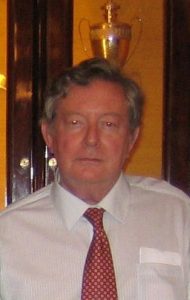



The Pringle of Stichill Baronetcy
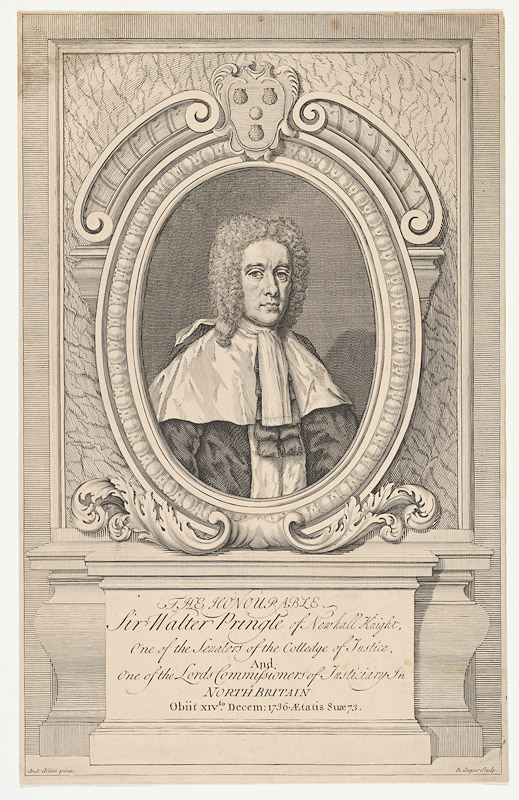
EPITAPH ON LORD NEWHALL.
Written in 1736, by the Poet, William Hamilton of Bangour. Sir Walter Pringle, a Lord of Session, with the title of Newhall, was promoted to the Bench in 1718, and died 14th December 1736.
To fame let Flatt’ry the proud column raise,
And guilty greatness load with venal praise,
This monument for nobler use design’d
Speaks to the heart, and rises for mankind;
Whose moral strain, if rightly understood,
Invites thee to be humble, wise and good.
Learn here of life, life’s ev’ry sacred end,
Hence form the father, husband, judge and friend:
Here wealth and greatness found no partial grace,
The poor look’d fearless in th’ oppressor’s face;
One plain good meaning thro’ his conduct ran,
And if he err’d, alas! he err’d as man.
If then unconscious of so fair a fame
Thou read’st without the wish to be the same,
Tho’ proud of titles, or of boundless store,
By blood ignoble, and by wealth made poor,
Yet read; some vice perhaps thou may’st resign,
Be ev’n that momentary virtue thine,
Heav’n in thy breast here work its first essay,
Think on this man, and pass unblam’d one day.
Online book: The poems and songs of William Hamilton of Bangour
Online book: Records of the Baron Court of Stitchill, 1655-1807; (1905)Online book: Diary of George Ridpath, minister of Stitchel, 1755-1761
Online book: Memoirs of Walter Pringle of Greenknow, Edinburgh 1751.
Online book: The Memoirs of Walter Pringle, ed. by Rev. Walter Wood, with notes and an appendix. Edinburgh 1867.
Online book: Commonplace book of Francis Pringle
Online book: Our Journall into Scotland, Anno Domini 1629, 5th of November, from Lowther.
Online book: Royal Letters, Charters, and Tracts, Relating to the Colonization of New Scotland, and the Institution of the Order of Knight Baronets of Nova Scotia, 1621-1638.
Online book: A History of the Baronetage, by Francis Pixley
The Standing Council of the Baronetage – www.baronetage.org.
www.debretts.com/people/essential-guide-peerage/baronetage
www.debretts.com/forms-address/titles/baronet
RedBookOfScotland.co.uk – The Red Book Project – Scottish Genealogy
Major Sir Norman Pringle of Stitchill, 6th Baronet (22nd chief of the clan) was instrumental in protecting civilian properties along Pennsylvania Avenue during the Burning of Washington by the British Army in the 1812 War.
- Letters by Major Norman Pringle, late of the 21st Royal Scots Fusileers: vindicating the character of the British Army, employed in North America in the years 1814-15, from aspersions cast upon it in Stuart’s “Three Years in North America” Second version here.
- Refutation of aspersions on “Stuart’s years in North America.” by James Stuart
- Three years in North America, vol 1, by James Stuart
- Three years in North America, vol 2, by James Stuart
- A biographical sketch, by William Winston Seaton of the “National intelligencer.” (On pages 117 and 118 there are complimentary references to Major Norman Pringle, later 6th baronet, in regard to the British burning of Washington D.C. on 24th August 1814.)
- The Burning of Washington by Anthony S. Pitch. (there is a reference to Major Pringle on page 13.)
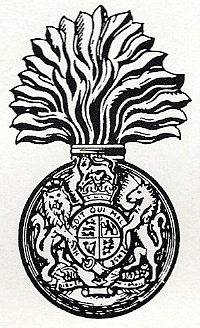
The cap badge of the 21st Regiment, the Royal Scots Fusiliers
Name meanings:
Craigleith – Creag = hill ; leith = side.
Craiglatch – Craig = Rock/hill; Latch = OE for ‘Boggy land’.
Stitchell/Sitchel/Stychill = Steep hill.
Newhall or Craigleith Tower:
The Book ‘The Stow of Wedale’ by Rev Thomas Wilson, published in 1924, states on page 66, “A few yards to the north of the farmhouse of Newhall, it is still possible to trace the foundations of the old keep, which, like the typical Border peel, must have been very substantially built.”
Williamhope
Williamhope is named for Sir William Douglas, the Knight of Liddesdale, who died at Williamhope in 1353 (His biography can be read here). The Pringles of Craigleith held Williamhope since at least 1541 for a few generations. As can be seen from this picture, Williamhope looks allot like Hoppringle. Williamhope later became the property of the Stoddart family, however their descendants have Pringle DNA according to findings in the Pringle DNA Project.
See:
Online books by Thomas Tod Stoddart, some of which contains a history of the family:
- Angling Songs: Stoddart, Thomas Tod, 1810-1880: Internet Archive
- Songs of the seasons and other poems: with autobiographical sketch of the author: Stoddart, Thomas Tod, 1810-1880: Internet Archive
- The angler’s companion to the rivers and lochs of Scotland: Stoddart, Thomas Tod, 1810-1880: Internet Archive
- An angler’s rambles and angling songs: Stoddart, Thomas Tod, 1810-1880: Internet Archive

